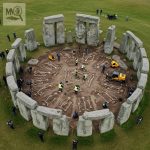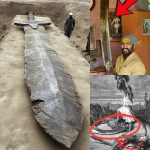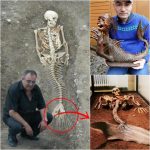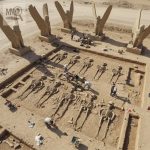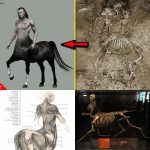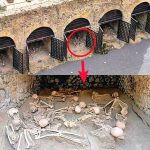Bronze Cauldron of Ancient Feasts: A Hallstatt Period Masterpiece
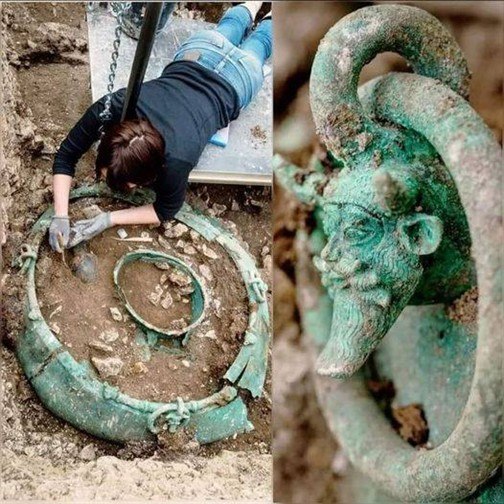
In Somme-Bionne, France, archaeologists have unearthed a remarkable Bronze cauldron attachment dating back to the late 6th century BC, during the Hallstatt period. This exquisite artifact, once part of a grand feasting vessel, offers a rare glimpse into the ceremonial, artistic, and cultural life of ancient Europe. Its verdant, oxidized surface, adorned with the sculpted face of a deity or mythical figure, reflects both the skill of the artisan and the spiritual significance of feasting rituals in Hallstatt society.
The Discovery

The Bronze cauldron attachment was excavated from a carefully studied site in Somme-Bionne, revealing not only the artifact itself but also contextual clues about its use. The soil preserved the verdigris patina, highlighting the cauldron’s age and authenticity. Archaeologists were struck by the intricate craftsmanship, which demonstrates a sophisticated understanding of metallurgy and aesthetic design during the Hallstatt period.
The sculpted face—likely representing a deity, mythical creature, or ancestral spirit—served as more than decoration. It acted as a symbolic guardian of feasts and rituals, connecting the living with the spiritual realm. The presence of such imagery underscores the ritualistic importance of communal meals in Hallstatt culture, where feasting was intertwined with social hierarchy, religious observance, and ancestral veneration.
Insights Into Hallstatt Culture
Hallstatt society, spanning roughly 800–450 BC, is recognized as one of Europe’s earliest Iron Age civilizations. Feasting played a central role, reflecting wealth, status, and community cohesion. Bronze cauldrons were often used in ceremonial banquets, serving both practical and symbolic functions. The Somme-Bionne cauldron attachment reveals the sophistication of Hallstatt artisans, who combined functionality with elaborate decorative motifs to convey spiritual and cultural meaning.

The sculpted face itself provides insights into Hallstatt beliefs. It may represent a deity associated with abundance, protection, or the afterlife, reflecting a worldview where material and spiritual life were closely linked. Such artifacts allow historians and archaeologists to reconstruct the values, rituals, and aesthetics of a civilization that left few written records.
Artistic and Technical Mastery
The craftsmanship of the bronze attachment is remarkable. Hallstatt artisans demonstrated expertise in casting, shaping, and decorating bronze, producing durable objects that have survived millennia. The verdant patina not only testifies to the cauldron’s age but also adds a visual depth, enhancing the deity’s visage and imbuing the piece with a sense of sacred authority.
The artifact’s technical precision, combined with its symbolic design, highlights the cultural and spiritual significance of communal feasting in ancient Europe. It is a tangible link between artistry, ritual practice, and daily life, bridging the material and spiritual worlds.
Conclusion
The Bronze cauldron attachment from Somme-Bionne is more than an archaeological artifact; it is a window into the ceremonial life, artistry, and beliefs of the Hallstatt period. Its sculpted face, verdant patina, and enduring craftsmanship tell stories of feasts, rituals, and humanity’s eternal connection to the divine and natural world. As researchers continue to study the piece, it stands as a testament to the ingenuity, spirituality, and cultural sophistication of Europe’s earliest Iron Age societies.
